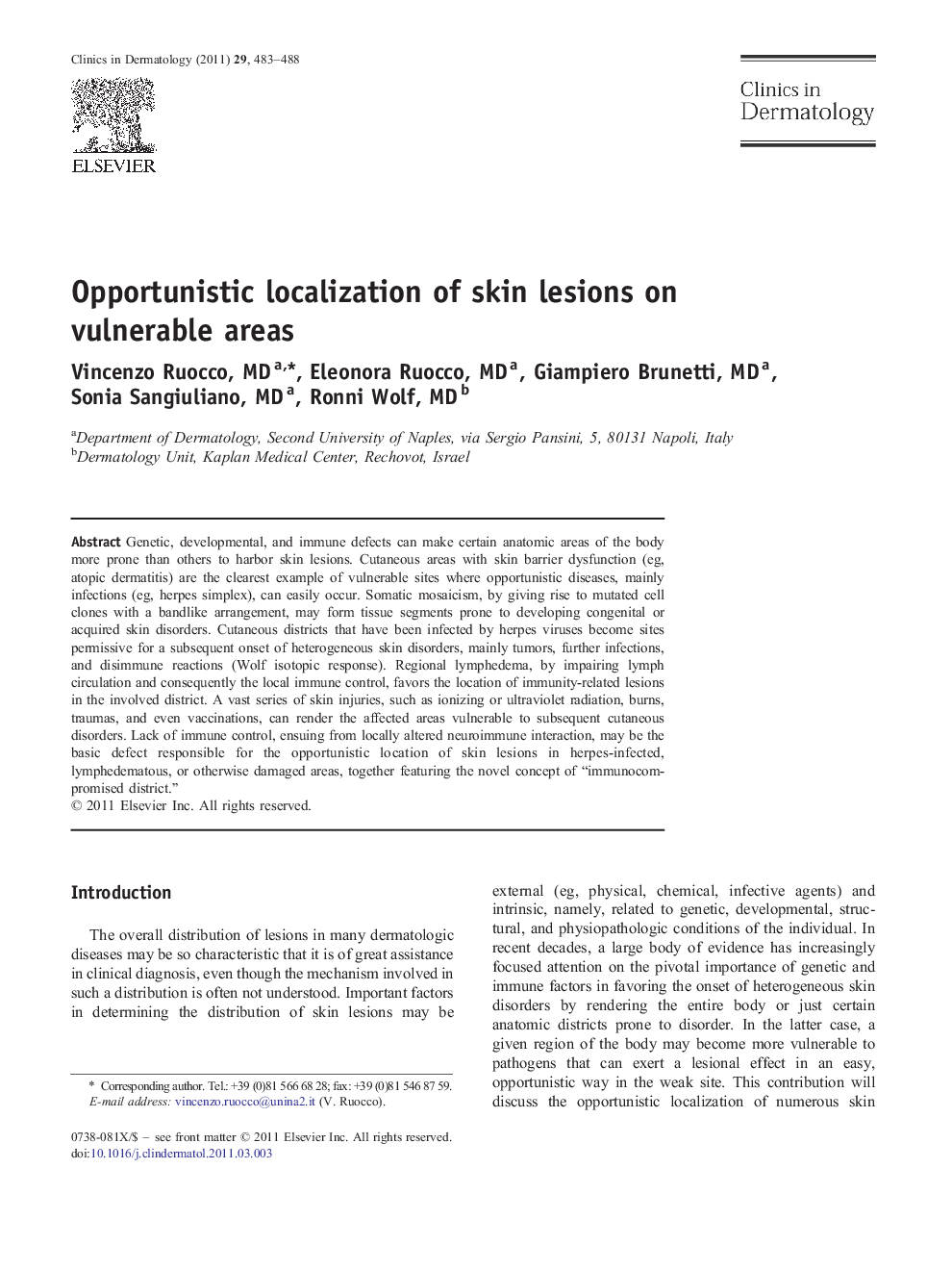| کد مقاله | کد نشریه | سال انتشار | مقاله انگلیسی | نسخه تمام متن |
|---|---|---|---|---|
| 3194450 | 1201393 | 2011 | 6 صفحه PDF | دانلود رایگان |

Genetic, developmental, and immune defects can make certain anatomic areas of the body more prone than others to harbor skin lesions. Cutaneous areas with skin barrier dysfunction (eg, atopic dermatitis) are the clearest example of vulnerable sites where opportunistic diseases, mainly infections (eg, herpes simplex), can easily occur. Somatic mosaicism, by giving rise to mutated cell clones with a bandlike arrangement, may form tissue segments prone to developing congenital or acquired skin disorders. Cutaneous districts that have been infected by herpes viruses become sites permissive for a subsequent onset of heterogeneous skin disorders, mainly tumors, further infections, and disimmune reactions (Wolf isotopic response). Regional lymphedema, by impairing lymph circulation and consequently the local immune control, favors the location of immunity-related lesions in the involved district. A vast series of skin injuries, such as ionizing or ultraviolet radiation, burns, traumas, and even vaccinations, can render the affected areas vulnerable to subsequent cutaneous disorders. Lack of immune control, ensuing from locally altered neuroimmune interaction, may be the basic defect responsible for the opportunistic location of skin lesions in herpes-infected, lymphedematous, or otherwise damaged areas, together featuring the novel concept of “immunocompromised district.”
Journal: Clinics in Dermatology - Volume 29, Issue 5, September–October 2011, Pages 483–488